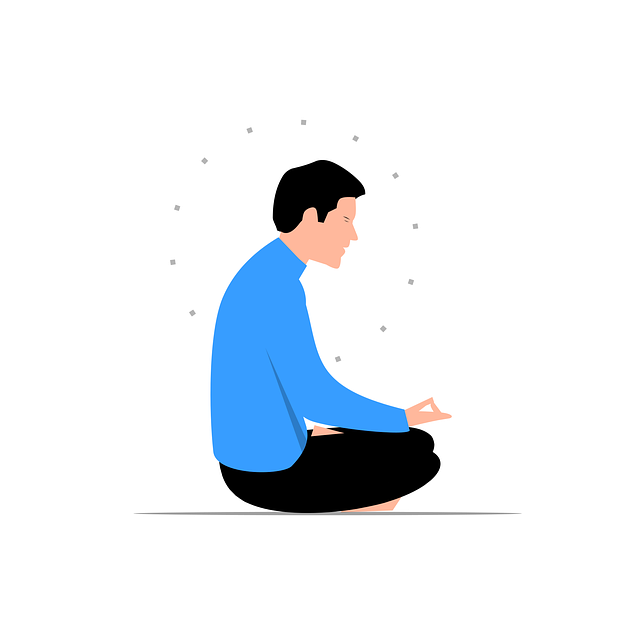Mindfulness meditation is a powerful tool for managing Castle Rock Adjustment Disorder Therapy, promoting emotional regulation and present-moment awareness. By focusing on breath, bodily sensations, and thoughts without judgment, individuals gain insight into their internal experiences, break negative thought patterns, and cultivate acceptance. Integrated with traditional therapy, mindfulness enhances mental health awareness and supports the development of self-care routines for improved overall wellness. Techniques like body scans and mindful breathing strengthen concentration, calmness, and mind-body connection, ultimately fostering resilience and emotional healing. Overcoming common challenges, such as stress, anxiety, and inconsistent practice, through structured approaches paves the way for enhanced mental wellness.
Discover the transformative power of mindfulness meditation for managing Castle Rock Adjustment Disorder (CRAD) symptoms. This comprehensive guide offers practical steps to integrate meditation into your daily routine, fostering calm and resilience. Learn how setting a consistent practice, focusing your mind, and cultivating breath awareness can enhance mental clarity and emotional well-being. Overcome common challenges and embark on a journey towards inner peace and CRAD therapy success.
- Understanding Mindfulness Meditation for Castle Rock Adjustment Disorder Therapy
- Setting a Consistent Practice: Establishing Your Meditation Routine
- Finding Your Focus: Techniques to Enhance Concentration During Meditation
- Incorporating Breath Awareness: The Foundation of Mindful Presence
- Overcoming Challenges: Navigating Common Obstacles in Your Meditation Journey
Understanding Mindfulness Meditation for Castle Rock Adjustment Disorder Therapy

Mindfulness meditation is a powerful tool within Castle Rock Adjustment Disorder Therapy, offering individuals a way to cultivate present-moment awareness and foster emotional regulation. By focusing on the breath, bodily sensations, and thoughts without judgment, practitioners can develop a deeper understanding of their internal experiences and break free from negative thought patterns associated with adjustment disorders. This ancient practice encourages acceptance and non-reactivity, helping individuals manage stress, anxiety, and difficult emotions more effectively.
Integrating mindfulness into Castle Rock Adjustment Disorder Therapy complements traditional therapeutic approaches by promoting Mental Health Awareness and supporting Self-Care Routine Development for Better Mental Health. Regular meditation practices can enhance one’s ability to navigate life’s challenges with resilience and foster a deeper connection with their thoughts, feelings, and overall mental wellness. Additionally, Mental Wellness Journaling Exercise Guidance can accompany mindfulness meditation, encouraging individuals to reflect on their experiences, track progress, and further deepen their self-awareness journey.
Setting a Consistent Practice: Establishing Your Meditation Routine

Building a consistent mindfulness meditation practice is like cultivating a garden—it requires regular care and attention to bloom. Start by setting aside a dedicated time each day for your practice, whether it’s early morning or before bedtime. Consistency is key; even just 10-15 minutes daily can make a significant difference in managing stress and promoting emotional well-being. Think of it as a Castle Rock Adjustment Disorder Therapy session for your mind, fostering resilience and emotional healing processes.
As you establish your routine, find a quiet space where you feel comfortable and at ease. This could be a corner of your home, a peaceful park bench, or any place that allows you to disconnect from distractions. Begin each meditation with a few deep breaths, allowing yourself to become fully present in the moment. Through regular practice, you’ll develop a deeper sense of self-awareness and a confidence-boosting ability to navigate life’s challenges with greater clarity and calmness.
Finding Your Focus: Techniques to Enhance Concentration During Meditation

In the realm of mindfulness meditation, finding your focus is akin to embarking on a journey to calm the mind and foster emotional healing processes. The practice involves training your attention, which can be particularly beneficial for those seeking Castle Rock Adjustment Disorder Therapy. Start by choosing a single point of reference—the breath, a mantra, or even a specific object—and let go of any distractions. This process, though challenging initially, strengthens your mental health awareness and enhances self-awareness exercises, allowing you to navigate life’s stresses with greater ease.
Techniques such as body scans, guided visualizations, and mindful breathing can significantly improve concentration during meditation. By engaging these practices, individuals not only deepen their mindfulness but also discover a renewed sense of calm and clarity. Incorporating these strategies into your daily routine can transform your meditation experience, making it an effective tool for stress reduction and overall well-being, ultimately revolutionizing how you approach mental health awareness.
Incorporating Breath Awareness: The Foundation of Mindful Presence

Incorporating breath awareness is a fundamental aspect of mindfulness meditation practice and can serve as a powerful tool to cultivate present-moment awareness and calmness. By focusing on the breath, individuals can establish a strong connection between their mind and body, fostering a sense of grounding and stability. This simple yet profound technique forms the foundation for mindful presence, enabling practitioners to navigate through life’s challenges with greater resilience.
Breath awareness helps individuals become more attuned to their bodily sensations, emotions, and thoughts without judgment. Through regular practice, one can enhance their ability to regulate stress responses, improve focus, and cultivate a sense of inner peace. This is particularly beneficial for those dealing with mental health issues like Castle Rock Adjustment Disorder Therapy, as it provides a means to build resilience and promote positive thinking. By integrating breath awareness into daily meditation routines, individuals can better manage symptoms, enhance overall well-being, and develop a stronger risk assessment strategy for their mental health.
Overcoming Challenges: Navigating Common Obstacles in Your Meditation Journey

Overcoming Challenges is an integral part of any mindfulness meditation practice. As you embark on this journey, you may encounter common obstacles that can disrupt your progress. One such challenge is managing stress and anxiety, which often manifests as restless thoughts or a racing mind. Techniques like deep breathing exercises and body scans can help you navigate these turbulent waters by grounding yourself in the present moment. Remember, mindfulness isn’t about silencing your thoughts but learning to observe them without judgment.
Another hurdle could be maintaining consistency. Integrating meditation into your daily routine requires discipline and commitment. It’s essential to set aside dedicated time for practice, even if it’s just a few minutes each day. A structured approach, such as following guided meditations or using apps designed for mindfulness training, can assist in overcoming this challenge. Enhancing your mental wellness and emotional healing processes is within reach when you address these common obstacles head-on. Additionally, focusing on self-esteem improvement can fortify your resilience during tough meditation sessions, empowering you to persevere and reap the benefits of a calmer, more focused mind.
Mindfulness meditation, as a therapeutic tool for managing Castle Rock Adjustment Disorder, requires consistent practice and adaptability. By setting aside dedicated time, focusing on breath awareness, and employing various concentration techniques, individuals can navigate common challenges and reap the benefits of enhanced emotional well-being. Remember that mindfulness is a journey; patience and persistence are key to unlocking its transformative power in your therapy process.









